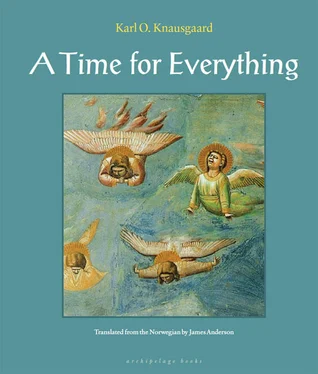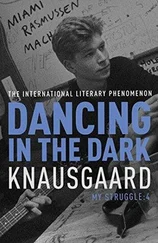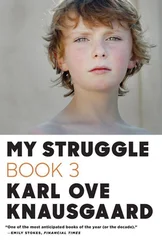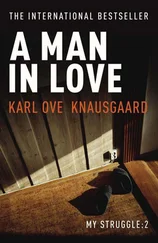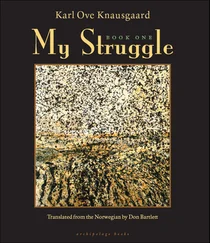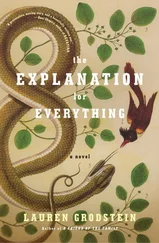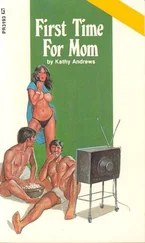This explains what Jesus meant when he said he and his Father were one. Bellori compared this to what happens when a person dies. I and my corpse are one , he writes, the two things are identical, but also not, as the I has given itself up in the transformation, and the corpse’s emergence is dependent on this very surrender.
If the Son of Man’s appearance was predicated on God’s relinquishment, as Bellori believed, it means that he thought as a man, felt as a man, behaved as a man, indeed that he was a man. A man with special talents certainly, clearly uniquely gifted, clearly singularly charismatic, but a man for all that. When God became man through Christ, he also became one with man’s doubt, uncertainty, longing, restlessness, and despair, just as much as with man’s hope and joy. The desperation in his condition lay in that he was never , at any time, certain that he really was divine. For how could he be certain? It is in the very nature of incarnation that God has relinquished his hold. It means that Jesus didn’t know who he was. But he had his suspicions, stronger on some occasions than others. It’s during these moments of clarity that he says he is one with God, and it’s worth noting that they increase the nearer to the end he gets.
The divine was something he’d been, and would be again, but not something he was. That’s why at one moment he can say that he and the Father are one, only to fall to his knees the next praying to that same Father. No one took these contradictions for what they were: contradictions. No one took his confusion for what it was: confusion. The reason for this is obvious: as long as the divine is regarded as perfect, always complete and in absolute balance, one must either brush aside all contradictions one finds within its sphere, or neutralize them. There are no other possibilities. But Bellori regarded the divine as mutable and therefore didn’t repudiate the discrepancies. Rather, he took them as confirmation that he was right: the divine was incomplete and not in balance.
In this context incarnation was especially important. Is there any greater imbalance imaginable than the one incarnation brought with it? Is there any greater change? In the Old Testament the divine reveals itself as flaming angels and vast wheels in the air, burning pillars and seas that open, cities that are destroyed in a rain of fire and sulfur, plains full of skeletons that get back their flesh, sinews, and skin to rise again, ladders that reach up to heaven, terrible scourges, entire armies that are annihilated from one moment to the next. The divine is always something outside mankind. With Christ the divine moves within and assumes quite different forms. With its strange mixture of comedy and beauty, foolishness and innocence, candor and theatricality, brutality and tenderness, there is something almost vaudevillian about Christ’s Passion, a kind of night of misrule, in which the king whom no one knows is a king is whipped and dressed up as a jester-king with a fool’s cloak and a fool’s crown, and then nailed up to die on a cross between two robbers, with the doubly ironical legend above his head: This is Jesus the king of the Jews .
This is my body , he says, and they betray him. This is my blood , he says, and they deny him. My heart is ready to break with grief; stop here, and stay awake , he says, and they doze off. The guards come to take him prisoner, and an ear is cut off. He says he’s the Son of Man, and they tear his robes. They spit on him. They place a cloth over his face and beat him. He is led to the governor’s headquarters, and the soldiers dress him in a scarlet mantle, place a crown of thorns on his head, and shout, Hail, King of the Jews! They beat him over the head with a cane and then kneel and acclaim him. When, exhausted from carrying his cross through the city, he asks for something to drink, they give him wine mixed with gall. Then they nail his palms to the cross, and then they nail his feet, and then they raise the cross. When they’ve done this, they draw lots for his clothes. Those who pass by and see him shout: If he’s God’s son, let God rescue him .
He hung there for an entire day.
And darkness fell over the whole land. Then Jesus cried aloud.
Eli, Eli, lama sabachthani?
All his life he has struggled against doubt, but now, in the moment before he dies, sapped of all strength, he can’t keep it at bay any longer, and he gives way in the most famous of all laments.
My God, my God, why hast thou forsaken me?
This was the way Bellori understood Christ in On the Nature of Angels . And that was how he’d understood him in the years since. But then he rises from the little pool in Padua, lifts his pack onto his back, takes his staff in hand, crosses to the chapel, and goes in. There he sees Giotto’s frescoes, which he has been looking forward to for a long time, and when he comes out again, everything has changed. Quickly, he retrieves his writing materials from his pack, scribbles down that we know nothing, and that there is nothing to know. For the next two years he doesn’t write a word.
What had he seen?
The chapel is still there, the frescoes still adorn the walls, anyone can go there and see what Bellori saw with his own eyes. The lamentation. The picture of a Christ who has just relinquished his spirit, as Mary kneels before him, while the angels above them seem to be breaking forth from the somber heavens. Their movements are violent and expressive, they fill the sky with motion and drama, in contrast to the lifeless Christ, the grieving Mary. The picture is condensed: there is redemption here, resignation, adoration, sorrow. It shows the moment when Jesus is most like us, he’s dying, he’s dying like a man, at the same time as he’s moving away from us, in an impossible movement, a reverse death, presence and absence at one and the same time, God and man.
What would Bellori have seen?
He would have seen the angels.
One of them closes his eyes, his mouth twisted in tears, as he clutches his face with both his hands, fingertips to his cheeks as if about to claw himself. Another is pictured in a strangely distorted posture, the upper half of his body lifted as if in ecstasy. A third opens his arms as if in embrace or surrender. The angels’ grief is frenzied. And Bellori couldn’t even have thought about it, it must just have flashed on his mind as a certainty the moment he saw them.
God was dead.
How frightened he must have been as he hurried out of Padua that evening. God had emptied himself into Christ and become man. And as a man he’d died. The angels alone remained, that was why they were insane with grief, and why their lives had altered so dramatically in the centuries that followed. God was dead on the cross, and the angels were imprisoned here.
Presumably Giotto himself painted the angels from the medieval concept that the angels never knew what lay in store for Jesus. That was what he thought. But thought’s truth is never the same as the picture’s truth. Bellori viewed them with all his knowledge, which, as regards angels, was probably the most extensive of his time, and he saw them with the ever-nagging question in his mind: Why were the angels captive here?
Now he knew the answer. But it brought him no satisfaction, no peace, no happiness. Just fear. And then sorrow. And then despair.
If he looked up at the night sky, with its infinity of shining stars, he thought that they were quite alone there. If he walked through the forest in the daytime, he thought that there was no meaning in anything. Why does the grass grow? Why do the flowers grow? Why do the trees grow? Why this desire in all living things to expand and multiply? What was it everything was grasping at? Why did calves bellow in their fear of death when they knew they were going to be slaughtered? Why did cornered rats attack creatures many times larger than themselves?
Читать дальше
